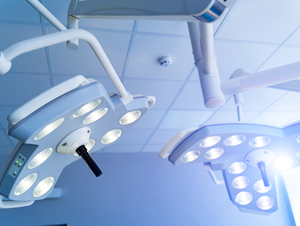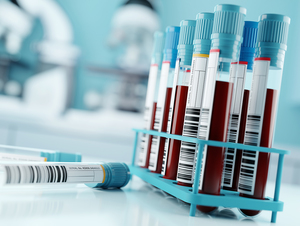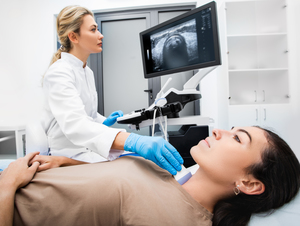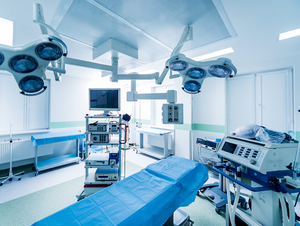This question is regarding Direct Visualization of all 4 parathyroids versus radioguided parathyroidectomy. When directly visualizing the 4 parathyroids, is it easy to tell a normal gland versus a hyperactive gland? I'm sure it is easy to tell if one is grossly enlarged but if it is going abnormal (producing too much PTH) but not yet enlarged, can that be seen or can it only detected by the radioactivity? If 2 of the glands are abnormal or will become abnormal, do they usually become abnormal at the same time? The reason I ask this question is that I see you worked at the Norman Parathyroid Center who uses the radioguided method while you prefer the direct visualization method. Do you still run a sestamibi scan before each surgery but simply don't take a sample of each gland to test individually for radioactivity? Is it just a difference in your views on sampling via visual and being able to tell by size or texture or other feature rather than radioactivity and consequential exposure for patients? Since 20% have more than one gland hyperactive, I'm wondering how certain the visualization is or if in certain cases you do test. I see your method is different now from what you did at Norman Center and just wondered why you changed.

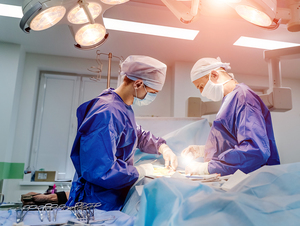
Thank you for your question. It touches on several important aspects of parathyroid surgery. I was at the Norman Parathyroid Center for six years, and was the Medical Director when I left to start my own practice. In starting my own center, I took a close look at our practices in Florida and critically evaluated each one. For the most part, the operation that I do here is the same as the one I did at the Norman center. The one change is that I do not do radioguided surgery in every patient. Note that I still use the radioguided technique in many patients! If you get a sestamibi scan on the day of surgery, I can and will still use the probe to check radioactivity levels in the glands. Since they are radioactive from the scan, it just makes sense to check. But the actual radioactivity levels are almost never all that useful, which is why I no longer insist that every patient get a scan the morning of surgery.
If there is a test that involves radioactivity that is not going to add useful information, then why subject everyone to that extra radiation? The scan is very good for ruling out ectopic (odd location) parathyroid tumors, and I do get it for that reason. If someone has already had a scan and it shows that there are no obvious ectopic tumors, then I really don’t need a new one. If someone comes and has not had a scan before, it makes sense to do it the morning of surgery. In that case, I’ll use the probe and check the levels in the OR. Almost every hospital is going to have this probe - there is nothing special about it. But with the experience that I have now, the probe is just not that helpful.
Now to answer the direct questions.
Is it easy to tell normal vs. overactive glands? Usually, yes. When you look at all four glands, it is usually obvious if there is one large adenoma and three normal glands. But sometimes it is not entirely clear. You have to use your experience with thousands of prior parathyroid glands and make a judgment about whether or not the gland should stay in. This is why you want to have an experienced surgeon. The radioguided probe is not going to help in this situation, because in nearly all cases, these “borderline” glands are not going to show a lot of radioactivity on biopsy.
This needs to be repeated, because it is absolutely essential to understand. A large parathyroid adenoma will show a high radioactivity level. A biopsy of a normal gland will give a low radioactivity level. A biopsy of a small parathyroid tumor will also show a low radioactivity level. A gland that is “going bad” and not yet a large tumor will usually show a normal radioactivity level. This is why I don’t find the probe all that helpful.
Let’s go through a theoretical scenario in which the probe might help: Suppose I find all four glands. One is very abnormal in size, color, and consistency. Two of the glands are perfect: soft, yellow-orange in color, and small. And then the fourth gland is somewhere in between, maybe normal in size but redder in color and firm. Will the probe help? If I remove the grossly enlarged gland, it will most likely give a high radioactivity number. If I biopsy the two “normal-looking” glands, they will show low radioactivity levels. What about the fourth gland? If I biopsy it, it will probably show the same numbers as the biopsies of the normal-looking glands. (I have a lot of experience with this.) Now what do you do with that information? Do you leave the gland in there because the radioactivity is low? Do you remove it because it just doesn’t seem like a normal gland? Since you have two perfectly normal-appearing glands, it is better to remove this possibly abnormal gland rather than leave it in place. Essentially, you ignore the radioactivity levels and go by what you can see clinically.
There were no cases in which a gland looked completely 100% normal and the biopsy was unexpectedly high. At the Norman center, we would take a “large biopsy” (remove half of the gland) and then get a higher radioactivity level (because there is more tissue present), and then use that as evidence that the gland should come out. But we only took the larger biopsy because the gland looked abnormal! We didn’t do that with normal glands.
Radioguided parathyroid surgery is helpful in rare cases, and in those cases I will always use it. But for most patients, especially in a first-time operation, it is just not adding enough information to justify the extra cost and radiation to the patient. I always want to do what is best for patients, and that is partly why I opened my own center.
